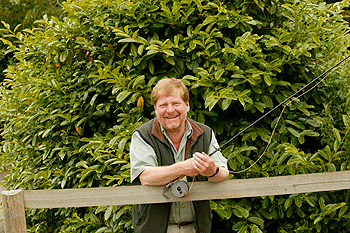Corvid control – Gamekeeper

Corvid control – Gamekeeper.
It?s funny how things vary over the years. We have been running the little Dorset shoot for about 15 years, with a concerted Larsen trapping campaign for crows and magpies each spring.
With wild pheasants as the mainstay of our sport, and conservation of our wild grey partridges and other farmland birds a key priority, the annual corvid control programme, to reduce nest predation, is an essential part of the shoot?s management.
This year has been a record for crows, with more than 30 trapped by the end of May. In 2011, we had trapped just nine by the end of June. The only season with a lower score was our first, in 1997, when I caught just seven. Magpie catches vary, too.
This year has been quiet, with just a dozen caught, but in some years the catch has been into the twenties. Catches of both have dried up now, and by the time you read this I will, quite literally, have knocked the project on the head.
Ravens having no effect
Ravens, which first returned here a bit over a decade ago, are now well established and breeding all around us.
Guilds of predation being what they are, I had wondered if they would suppress crow numbers. Up to last year, that looked as though it might be happening, but this year?s results tend to refute that theory.
It may be that our neighbours? varying corvid control has an impact on catches, too. I get the feeling several folk are catching magpies these days.
But if you drive through our nearby national nature reserve, where there is no control, you are sure to see magpies scavenging by the roadside, so we are not short of a colonist to refill the space we create.
This brings me to the overall strategy of our Larsen trapping campaign. The aim, quite emphatically, is not to bring about the regional, or even local, extinction of crows and magpies.
Despite the fluctuations year on year, a glance at my overall figures shows that we do the same basic job in temporary population reduction each spring. After this, we stop and allow recolonisation.
A key part of the strategy is to make an early start and not allow the corvids to get too underway with their nesting season. I am lucky to be in a network of local keepers, some of whom overwinter one or two decoys.
Because of this, I can usually scrounge both a crow and magpie in mid to late March. At this time, the birds which are at the top of the pecking order are thoroughly territorial and pretty easy to catch.
For the first week or two, I will run up to six traps on our 400ha of woods and open farmland. My aim is to have all territorial pairs accounted for by early April. This has two benefits.
First, it means that the birds are under control when the first game eggs start to appear. Second, it means there are no dependent young crows or magpies left in the nests.
From now on, colonists will be non-breeders looking to climb the social ladder.
Pairs of either species already nesting off my patch will be unlikely to abandon that in favour of pastures new.
By this stage, I can also reduce the trapping effort. Keeping four traps going ? two with crows and two with magpies ? is an insurance policy against someone liberating a decoy, but in practice, one working trap with each species would probably be enough.
Attracting the right birds
Minimising capture of non-targets is also a key objective. Part of this comes from siting the traps in places that have worked well in the past.
As with so much wildlife, what makes a good crow or magpie territory seems to be written in the local geography. Another key objective is not to make the trap attractive to non-target species.
For this reason, I feed the decoys complete diet dog food rather than carrion.
The soaked kibbles seem perfectly palatable to the birds, and it is much easier to keep the trap clean compared with the inevitable mess that comes from feeding bits of rabbit or other carcase.
Some folk will consider that the expense of buying food for decoys is not warranted.
However, since I feed a different grade from the grade I feed my dogs, a 15kg bag has kept two crows and two magpies going from late March to early June.
These days we are increasingly aware of the need to make our activities sustainable.
As I see it, corvid control with Larsen traps fits this concept perfectly.
We aim to take an annual and sustainable ?crop? from the crow and magpie population, with a view to enhancing the crop of game that we can shoot during the winter.








